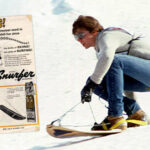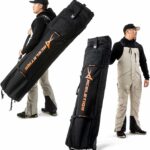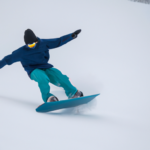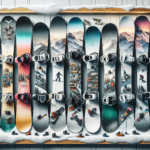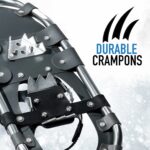Flipping through winter sports magazines or scrolling through snowboarding articles, you might have encountered the term “camber snowboard.” As your interest peaks and curiosity flares, this article aims to enlighten you about the elusive camber snowboard. Emanating from the roots of snowboarding history itself, the camber board represents a traditional, tried-and-true design. It possesses a distinguishable upward curve in the middle of the board, a unique attribute contributing to its impressive edge control and pop. Remain poised, as this article peels away the layers of this intriguing concept, demystifying the mechanics and beauty of the camber snowboard for you. Dive right in to explore the thrilling world of snowboarding from a refreshing perspective, and perhaps even discover your new favorite winter sport!
Definition of Camber Snowboard
A camber snowboard is a specific type of snowboard, distinguished by its unique shape. Characterized by a raised middle section and contact points close to the ends of the board, camber snowboards offer distinct advantages and disadvantages over their counterparts.
Understanding the term ‘camber’
‘Camber’ is a term used in the snowboarding world to describe the curvature of a snowboard. It specifically refers to the upward curve or arch in the middle of the board. When a camber board is placed on a flat surface, the midsection of the board will not touch the surface, while the areas near the tip and tail do. This unique design feature impacts the way the snowboard behaves on the snow.
Traditional design and structure of a camber snowboard
Traditional camber snowboards are designed with a single, smooth arch running from tip to tail and have contact points near the ends. The design is often likened to a slight ‘U’ shape. This shape ensures that the weight of the rider is evenly distributed across the entire length of the board, providing improved control and precision.
Types of Camber Snowboards
There are several types of camber snowboards, each with its unique characteristics and advantages.
Traditional camber snowboards
This is the most classic form of snowboards, sporting a single continuous arch. Traditional camber snowboards are known for their responsiveness, stability and excellent edge control, making them a favorite amongst experienced riders.
Hybrid camber snowboards
As the name implies, hybrid camber snowboards incorporate elements from both traditional camber and rocker designs. This combination can vary, but it generally means there’s camber underfoot for power and edge hold, with rocker towards the tips for better maneuverability and float in powder.
Reverse camber snowboards
Reverse camber snowboards, also known as rocker snowboards, have the opposite curvature of traditional camber boards— the middle of the board touches the ground and the ends are lifted. This design is popular for its forgiving nature and better float in deep snow.
Flat camber snowboards
Flat camber snowboards, true to their name, have a flat profile from tip to tail. They aim to provide a balance between the stability of traditional camber boards and the playfulness of rocker boards.
Features of Camber Snowboards
There are a handful of characteristic features that define a camber snowboard.
Slope style and shape
Camber snowboards are often associated with aggressive, high-speed riding on groomed trails and in terrain parks. Their arched shape provides good edge control and power, especially on packed snow or ice.
Camber profile characteristics
The defining feature of a camber snowboard is its mid-board arch. When unweighted, the board’s center lifts off the ground, while the areas around the front and rear bindings, known as the contact points, remain touching the ground.
Torsional flex and its benefits
Torsional flex refers to the twisting flexibility of the board. Camber snowboards usually have good torsional flex, which allows you to initiate turns easily and offers quick edge-to-edge transitioning.
Edge control in camber snowboards
Camber boards distribute the rider’s weight evenly along the edge of the board. This results in superior edge control, making it easier for riders to carve turns on hard-packed snow.
Benefits of Using Camber Snowboards
Camber snowboards come with several benefits that make them a great option, especially for experienced snowboarders.
Increased control and precision
Camber snowboards are known for their precise control. They deliver optimal performance at high speeds and offer an unmatched edge hold, making them an excellent choice for aggressive riders and racers.
Superior pop and speed
Camber boards also have superior pop which makes them great for jumps and tricks. They’re faster than other board types, making them an excellent choice for speeding down groomed slopes.
Stability on hard-packed snow
The shape and construction of camber boards also make them exceptionally stable on hard-packed snow or ice, giving them an edge when it comes to keeping control on tricky terrain.
Disadvantages of Camber Snowboards
While camber snowboards have their strengths, it’s important to also consider their disadvantages.
Difficulty in powder snow
Camber snowboards are not the best option for deep powder as they tend to sink more than rocker or flat boards. This means they require more effort to navigate through powder.
Increased chance of catching an edge
The design of camber snowboards makes it easy to catch an edge, which can cause falls. This can be particularly troublesome for beginners who are still learning to control their board.
Requires more effort and skill to ride
Camber boards are often seen as more difficult to ride because they require more skill and experience. They’re generally not the first choice for beginners who are looking for a forgiving board to start with.
Choosing the Right Camber Snowboard
Choosing the right snowboard depends on a variety of factors.
Factors to consider
These factors include your riding style, skill level, and body type. For instance, beginners might prefer a softer, more flexible board, while advanced riders might opt for a stiffer model that provides more precision and control.
Matching the snowboard to your riding style
Your riding style is a key determinant in choosing your board. If you love racing down groomed runs or performing tricks in the terrain park, a traditional camber board would be perfect. If you spend a good amount of time in powder, a hybrid or reverse camber may be a better match.
Appropriate size and width
The right size and width of the snowboard are crucial for the best possible ride. If you’re taller or heavier, you’ll typically need a longer board. Similarly, riders with larger feet will benefit from wider boards to avoid “overhang” where your toes and heels hang over the edge of the board.
Tips to Use a Camber Snowboard
When you’ve picked out your perfect camber snowboard, there are a few tips to keep in mind.
Effective riding techniques
First, make sure you’re using the right techniques. Camber boards require active, aggressive riding. This means you’ll need to properly shift your weight and use your edges to initiate turns and maintain control.
Maintaining and caring for your snowboard
To keep your camber snowboard in top condition, regular maintenance is crucial. This includes waxing the base regularly, keeping the edges sharp and storing it in a dry, cool place in the off-season.
Comparing Camber Snowboards with Other Types
Understanding how camber snowboards stack up against other types of snowboards can help you make an informed decision about which board is best for you.
Camber vs Rocker
Camber snowboards provide better edge hold, control, and pop than rocker boards, making them a great choice for riding groomed runs and performing tricks. Rocker boards, on the other hand, offer more float in powder and tend to be more forgiving for beginners.
Camber vs Flat
Camber boards offer more pop and edge control than flat boards, making them ideal for carving turns and tackling hard-packed snow. Flat boards, however, are more playful and easier to handle, making them great for beginners or park riders.
Camber vs Hybrid
Hybrid snowboards offer the best of both worlds, blending the advantages of camber and rocker or flat boards. They typically have camber underfoot for edge hold, with rocker in the tip and tail for float in powder and forgiving performance in the park.
Common Brands and Prices of Camber Snowboards
When it comes to camber snowboards, there are several manufacturers to choose from.
Leading snowboard brands
Popular snowboard brands that produce high-quality camber boards include Burton, Jones, Salomon, and K2.
Average price range of camber snowboards
The price of a camber snowboard can vary widely depending on the brand, quality, and design. However, you can typically expect to pay anywhere from $300 to $600 for a reliable camber board.
FAQs About Camber Snowboards
Who should use a camber snowboard?
Camber snowboards are an excellent choice for intermediate to advanced snowboarders who value control, speed, and precision. They’re particularly suitable for those who enjoy groomed runs, park riding, and carving.
Is a camber snowboard good for beginners?
While a camber snowboard can certainly be used by a beginner, its aggressive style and less forgiving nature make it more challenging for first-time riders. Beginners might find a rocker or flat board easier to handle.
How to maintain a camber snowboard?
Maintaining a camber snowboard isn’t significantly different from maintaining any other type of snowboard. Regularly waxing the base, ensuring the edges are kept sharp, and storing it in a dry, cool place out of season are all important steps in keeping your board in top shape.
In sum, camber snowboards are a great choice for snowboarders seeking speed, precision, and control. They may require more skill to master, but the performance they deliver can make the learning curve completely worthwhile.
- What Snowboard Bindings Should I Get? - January 23, 2024
- What Size Screws For Snowboard Bindings? - January 23, 2024
- How To Snowmobile On Water? - January 23, 2024




